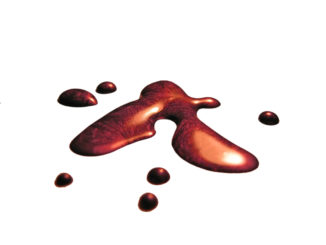
Five Myths about Foot Care
From bunions to broken toes, local foot and ankle surgeon has heard it all.
“Don’t cross your eyes, they’ll stay that way!” Old wives’ tales and myths like this are fun to laugh at. We believed them as children. “Step on a crack and you’ll break your mother’s back.” But there are other myths that are no laughing matter, especially when they involve your health.
From bunions to broken toes, foot and ankle surgeon Nicole Hancock, DPM, AACFAS, has heard it all. The physicians of Complete Foot and Ankle Care of North Texas treat patients at their Denton office. Dr Hancock shares five myths about foot care and the realities behind them.
There’s the myth that cutting a notch, a vee, in a toenail will relieve the pain of an ingrown toenail. In reality when a toenail is ingrown, the nail curves downward and grows into the skin. Cutting a vee in the toenail does not affect this growth’ the new nail growth will continue to curve downward. And cutting a vee may actually cause more problems and is painful in many cases.
How many think that if you can walk on it, your foot or ankle can’t possibly be broken? The reality is it is entirely possible to walk on a foot or ankle with a broken bone. “It depends on your threshold for pain, as well as the severity of the injury,” says Dr Hancock. “But it’s not a smart idea. Walking with a broken bone can cause further damage.” One should stay off an injured foot until diagnosis by a foot and ankle surgeon. Until then, apply ice and elevate the foot to reduce pain.
Shoes cause bunions. In truth bunions are most often caused by an inherited faulty mechanical structure of the foot. It is not the bunion itself that is inherited, but certain foot types make a person prone to developing a bunion. While wearing shoes that crowd the toes together can, over time, make bunions more painful, shoes themselves do not cause bunions. While some treatments can ease the pain of bunions, only surgery can correct the deformity.
You’ve heard that a doctor can’t fix a broken toe. Did you know that 19 of the 26 bones in the foot are toe bones? “What I tell patients is there are things we can do to make a broken toe heal better and prevent problems like arthritis or toe deformities later on,” Dr. Hancock says. Broken toes that aren’t treated correctly can also make walking and wearing shoes difficult. A foot and ankle surgeon will x-ray the toe to learn more about the fracture. If the broken toe is out of alignment, the surgeon may have to insert a pin, screw or plate to reposition the bone.
And lastly, a corn is a small build-up of skin caused by friction. Dr Hancock says many corns result from a hammertoe deformity, where the toe knuckle rubs against the shoe. The only way to eliminate these corns is to surgically correct the hammertoe condition. Unlike a callus, a corn has a central core of hard material. But corns do not have roots. Attempting to cut off a corn or applying medicated corn pads can lead to serious infection or even amputation. A foot and ankle surgeon can safely evaluate and treat corns and the conditions contributing to them.
To reach any of the doctors at Complete Foot and Ankle Care of North Texas or make an appointment, go to www.CompleteFootAndAnkleCare.com or call 866-490-3668. More information is at the American College of Foot and Ankle Surgeons’ consumer web site, FootHealthFacts.org



